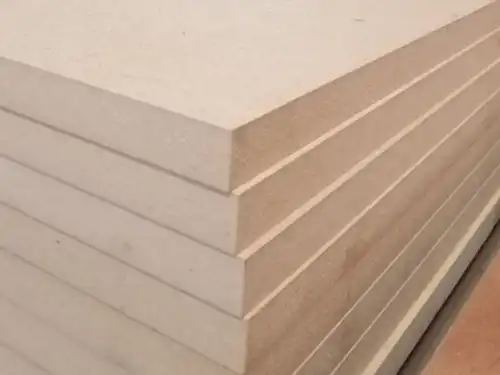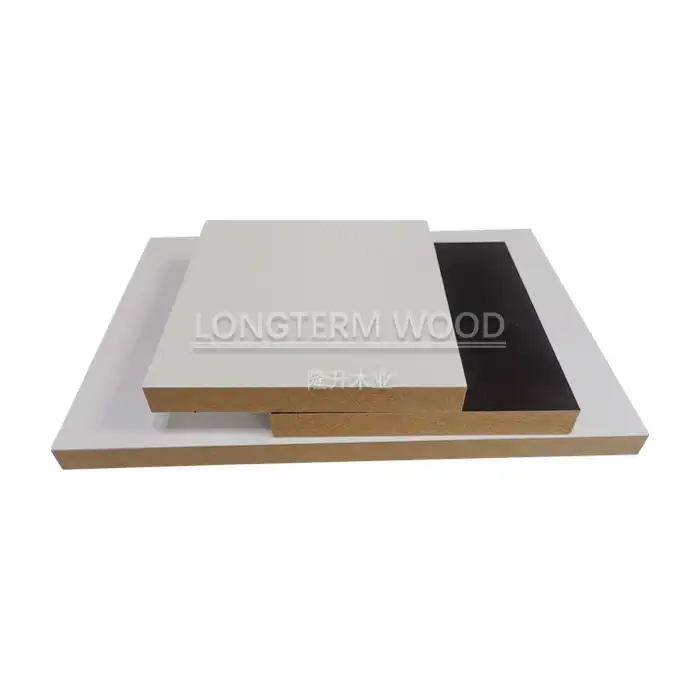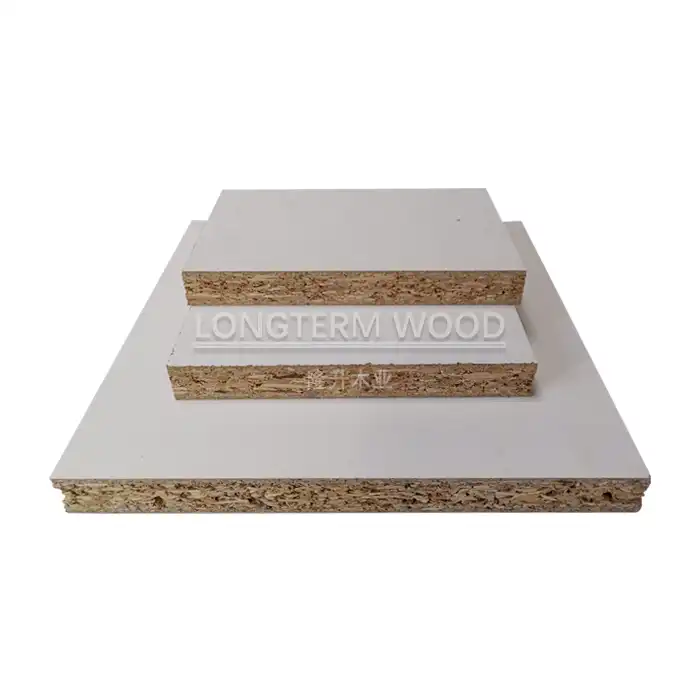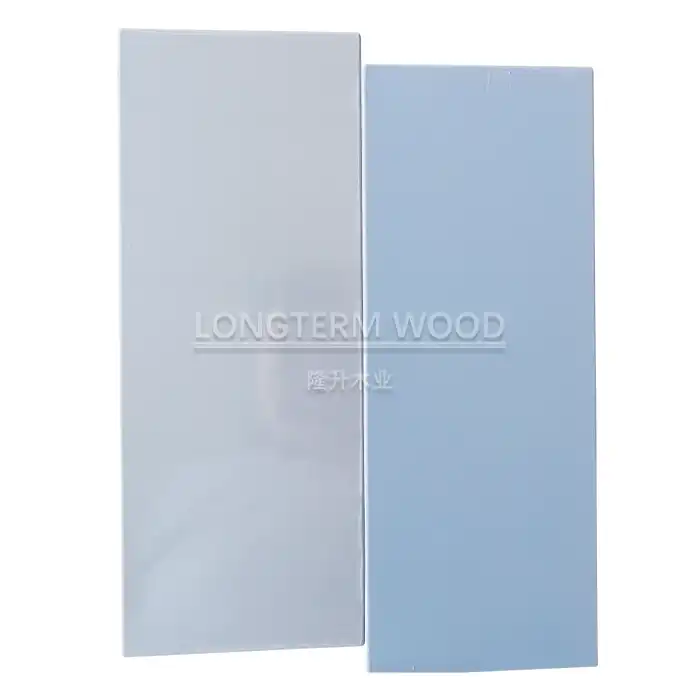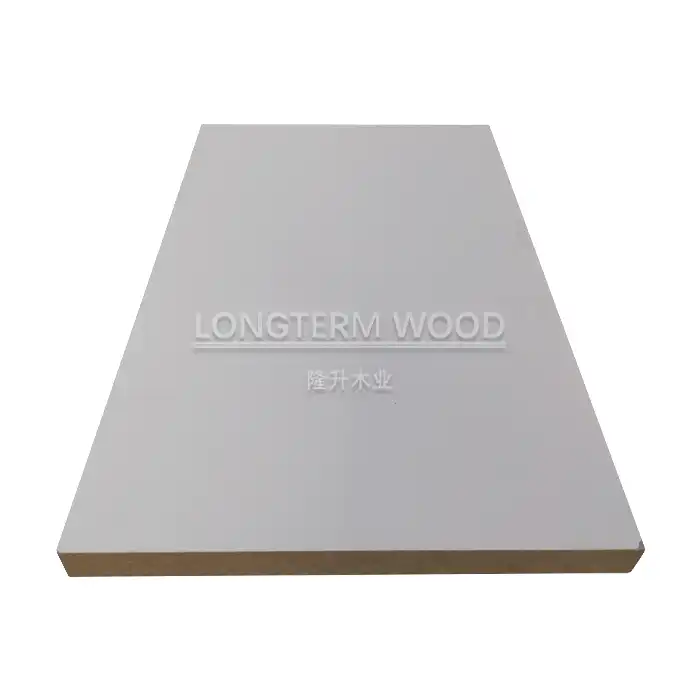
Do You Know How Different Textures of Melamine Plywood Can Enhance the Visual Impact of a Space?
2025-03-03
When it comes to interior design and architectural finishes, the textures you choose play a crucial role in defining the aesthetic and emotional response to a space. Melamine Plywood, with its versatility and range of textural options, has emerged as a designer's secret weapon for transforming ordinary spaces into visually striking environments. The interplay of different textures—from sleek high-gloss finishes to rustic woodgrain patterns—can dramatically alter spatial perception, create focal points, and establish distinctive design narratives. Understanding how to strategically incorporate various Melamine Plywood textures can elevate your designs from merely functional to truly exceptional.
The Psychology of Texture in Interior Spaces
How Textural Contrast Creates Visual Interest
The human eye is naturally drawn to contrast, and incorporating varying textures of Melamine Plywood provides an excellent opportunity to capitalize on this psychological response. When smooth, high-gloss Melamine Plywood surfaces are juxtaposed with matte or textured finishes, the resulting contrast immediately creates visual interest that engages the viewer. This principle works particularly well in minimalist spaces where color palettes might be restrained. For instance, a kitchen design featuring high-gloss white Melamine Plywood cabinetry alongside textured woodgrain Melamine Plywood for an island creates a sophisticated interplay that adds depth without relying on bold colors. Designers often leverage this contrast to direct attention to specific areas, such as highlighting architectural features or creating natural focal points within a room. The tactile diversity of different Melamine Plywood textures also adds a multisensory dimension to the space, encouraging interaction and enhancing the overall experiential quality of the environment.
Texture's Role in Setting Emotional Tone
The textural qualities of Melamine Plywood significantly influence the emotional response to a space. Smoother textures typically evoke feelings of sophistication, cleanliness, and modernity, making high-gloss Melamine Plywood particularly suitable for contemporary settings where a sleek, professional atmosphere is desired. Conversely, more pronounced textures like embossed woodgrains or matte finishes create a sense of warmth, comfort, and approachability. This psychological effect makes textured Melamine Plywood an excellent choice for residential spaces or commercial environments where creating a welcoming atmosphere is paramount. The emotional impact of texture extends beyond conscious perception—studies suggest that textural elements influence subconscious responses to environments, affecting everything from perceived temperature to acoustic comfort. By strategically selecting Melamine Plywood textures that align with the intended emotional response, designers can create spaces that not only look impressive but also foster specific psychological states, from energized productivity to relaxed contemplation.
Texture as a Spatial Dimension Modifier
Beyond aesthetics and emotional impact, Melamine Plywood textures can actually alter the perceived dimensions of a space. Highly reflective, smooth Melamine Plywood surfaces tend to bounce light around a room, creating an impression of expanded space—a valuable technique for smaller environments. These reflective textures of Melamine Plywood can make ceilings appear higher and rooms more expansive by reducing visual weight. Conversely, richly textured Melamine Plywood applications can bring a sense of intimacy and coziness to oversized spaces that might otherwise feel impersonal or cavernous. The directional quality of certain textures, particularly linear woodgrains in Melamine Plywood, can also be harnessed to visually lengthen or widen spaces. For example, horizontal grain patterns can make narrow rooms appear wider, while vertical grains can accentuate ceiling height. This spatial manipulation through texture choice demonstrates how Melamine Plywood can serve as both a functional material and a dimensional design tool, offering solutions to common spatial challenges without structural modification.
Strategic Applications of Textured Melamine Plywood
Layering Textures for Depth and Sophistication
Creating visually rich environments often relies on the thoughtful layering of different textural elements, and Melamine Plywood offers exceptional versatility in this regard. Professional designers frequently employ a technique called textural stratification, where different Melamine Plywood textures are integrated throughout a space in complementary ways. For instance, a commercial office might feature smooth, high-gloss Melamine Plywood for reception desks and presentation areas, medium-textured surfaces for workstations, and more distinctly textured Melamine Plywood for accent walls or architectural details. This layered approach creates visual journeys through environments, rewarding closer inspection and creating spaces that reveal themselves gradually. The key to successful layering lies in maintaining a cohesive relationship between different Melamine Plywood textures—using complementary finishes that share certain qualities while offering sufficient contrast. This might involve selecting textures within the same color family but with varying reflectivity, or maintaining consistent reflectivity while varying pattern intensity. When executed skillfully, layered Melamine Plywood textures transform flat, two-dimensional surfaces into components with apparent depth and dimension, lending sophistication to even straightforward design concepts.
Texture Zoning for Functional Differentiation
In open-concept spaces where traditional walls are minimized, texture becomes an invaluable tool for delineating functional areas—a technique known as texture zoning. Different Melamine Plywood textures can effectively signal transitions between zones without interrupting the visual flow or requiring physical barriers. For example, in an open office layout, meeting areas might feature richly textured Melamine Plywood with pronounced woodgrain, while individual workstations utilize smoother, more subdued textures that minimize visual distraction. This textural coding creates intuitive wayfinding cues that help users navigate complex environments. The practical advantages of texture zoning with Melamine Plywood extend beyond aesthetics—different textures can also address functional requirements of specific areas. High-traffic zones benefit from more durable, scratch-resistant Melamine Plywood textures, while areas designed for acoustic control might incorporate micro-textured surfaces that help diffuse sound. In residential applications, texture zoning can elegantly distinguish between living, dining, and transitional spaces while maintaining an overall sense of continuity, demonstrating how Melamine Plywood textures contribute to both the visual organization and functional performance of contemporary interiors.
Focal Textures for Statement Features
Every compelling design incorporates elements that command attention, and distinctive Melamine Plywood textures excel in creating these statement features. The strategic use of highly textured or unusually finished Melamine Plywood can transform ordinary architectural elements into striking focal points that anchor entire design schemes. Feature walls clad in dramatically textured Melamine Plywood instantly become conversation pieces, especially when illuminated to emphasize their dimensional qualities. Similarly, furniture pieces like reception desks, kitchen islands, or built-in cabinetry can be elevated from purely functional items to artistic statements through the application of exceptional Melamine Plywood textures. The impact of these focal textures is often amplified when they represent a controlled departure from the predominant textures in the space—for instance, introducing a high-gloss, deeply embossed Melamine Plywood feature within an otherwise matte environment creates immediate visual drama. These textural focal points serve multiple design purposes: they create memorable first impressions, establish design narratives, and provide visual anchors that help users orient themselves within spaces. When selecting Melamine Plywood for focal features, designers often opt for textures with enhanced tactile qualities that invite touch, adding an interactive dimension to the visual experience and creating multi-sensory engagement that reinforces the memorability of the space.
Innovative Textural Combinations for Maximum Impact
Contrasting Matte and Gloss Finishes
One of the most effective textural strategies in contemporary design involves the deliberate juxtaposition of matte and gloss Melamine Plywood finishes within the same space. This approach creates dynamic visual interplay through the contrast in light reflection—while high-gloss Melamine Plywood surfaces capture and redirect light, creating bright highlights and reflections, matte surfaces absorb light, appearing softer and more subdued. When applied thoughtfully, this combination creates spaces with remarkable visual depth and sophistication. Kitchen designs frequently showcase this technique, with matte Melamine Plywood cabinetry paired with glossy backsplashes or countertops, creating a layered visual experience that changes throughout the day as lighting conditions shift. The tactile contrast between these finishes adds another dimension to the experience—glossy Melamine Plywood feels smooth and cool to the touch, while matte finishes offer a warmer, more organic tactile quality. This sensory diversity contributes to richer, more engaging environments. Additionally, the practical benefits of combining these textures cannot be overlooked; matte Melamine Plywood excels at concealing fingerprints and minor imperfections, making it ideal for high-touch surfaces, while glossy finishes can be easier to clean and maintain in areas less susceptible to frequent contact. By strategically deploying both finishes, designers can create spaces that are not only visually compelling but also functionally optimized.
Woodgrain Textures with Contemporary Applications
The enduring appeal of woodgrain textures speaks to our innate connection with natural materials, yet modern manufacturing techniques have revolutionized how these textures can be incorporated into contemporary designs through Melamine Plywood. Today's advanced woodgrain Melamine Plywood offers astonishingly realistic replication of natural wood species, complete with tactile grain patterns that closely mimic solid timber. These textures bring the warmth and organic quality of wood to spaces while offering superior consistency, durability, and cost-effectiveness. Forward-thinking designers have moved beyond traditional applications, using these woodgrain Melamine Plywood textures in unexpected contexts—vertical installations that showcase the grain direction, geometric patterns that highlight the textural qualities, or oversized applications that transform the scale of natural wood patterns. The versatility of woodgrain Melamine Plywood allows it to bridge design styles, working equally well in rustic environments where it enhances authenticity and in ultramodern spaces where it introduces organic elements that soften minimalist aesthetics. The latest innovations include synchronized textures, where the visual woodgrain pattern precisely aligns with physical texture indentations, creating Melamine Plywood surfaces with unprecedented realism that can be distinguished from natural wood only upon close inspection, offering designers authentic wood aesthetics without sustainability concerns or maintenance requirements.
Textural Transitions for Visual Flow
Creating cohesive environments that guide the eye and facilitate movement through spaces often hinges on thoughtful textural transitions—gradual shifts between different Melamine Plywood textures that create visual continuity while maintaining interest. Rather than abrupt changes between dramatically different textures, skilled designers often employ transitional techniques that create perceptual flow. This might involve using a medium-textured Melamine Plywood as an intermediary between highly textured and smooth surfaces, or incorporating borders that blend elements from adjoining textures. In expansive projects like hospitality environments or corporate campuses, these textural progressions with Melamine Plywood create intuitive pathways that guide visitors through spaces, subtly indicating directional cues and spatial hierarchies. The concept extends to vertical transitions as well—walls might feature graduated textural changes from bottom to top, with more pronounced Melamine Plywood textures at eye and touch level, transitioning to subtler finishes above. This approach acknowledges how humans interact with their environments at different elevations. Successful textural transitions often incorporate complementary elements like lighting designed to highlight specific textural qualities of Melamine Plywood at different points in the progression, enhancing the effect. Through these considered transitions, designers can create spaces that feel intentionally crafted and perceptually unified despite incorporating diverse textural elements, demonstrating how Melamine Plywood's textural range supports sophisticated design narratives.
Conclusion
The strategic selection and placement of different Melamine Plywood textures represent powerful tools in the designer's arsenal, capable of transforming ordinary spaces into visually extraordinary environments. From creating emotional responses to altering spatial perception, textural elements influence how we experience our surroundings on both conscious and subconscious levels.
Are you ready to elevate your next project with premium Melamine Plywood that offers unparalleled textural variety and quality? At Linyi Longterm Wood Industry Co., Ltd., our 20+ years of expertise ensures that your vision becomes reality. Whether you need high-gloss, matte, or realistic woodgrain finishes, our customizable options meet any design challenge while our strict quality control guarantees lasting performance. Don't settle for ordinary when extraordinary is within reach. Contact us today at howie@longtermwood.com to discuss how our Melamine Plywood can transform your next design project.
References
1. Williams, J. & Thompson, R. (2023). Textural Elements in Commercial Design: The Impact of Surface Qualities on User Experience. Journal of Interior Design, 48(3), 127-142.
2. Chen, L., Nakamura, T., & Davidson, P. (2022). The Psychology of Texture: How Surface Qualities Influence Perception and Behavior in Built Environments. Environmental Psychology Review, 15(2), 89-103.
3. Hernandez, M. & Fujita, K. (2023). Sustainable Materials in Contemporary Design: The Evolution of Engineered Wood Products. Architectural Materials Journal, 29(4), 211-225.
4. Singh, A. & Petersen, H. (2022). Textural Contrasts in Minimal Design: Creating Visual Interest Through Surface Variation. Scandinavian Journal of Design, 37(1), 45-59.
5. Anderson, B., Zhang, W., & Martinez, D. (2023). The Commercial Applications of Melamine-Faced Wood Products in High-Traffic Environments. Journal of Commercial Interior Design, 18(2), 112-128.
6. O'Connor, L. & Yamamoto, S. (2022). Material Innovation in Healthcare Design: Creating Healing Environments Through Texture and Finish. Healthcare Design Quarterly, 33(3), 76-91.
YOU MAY LIKE









